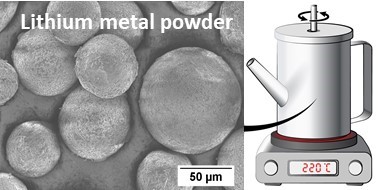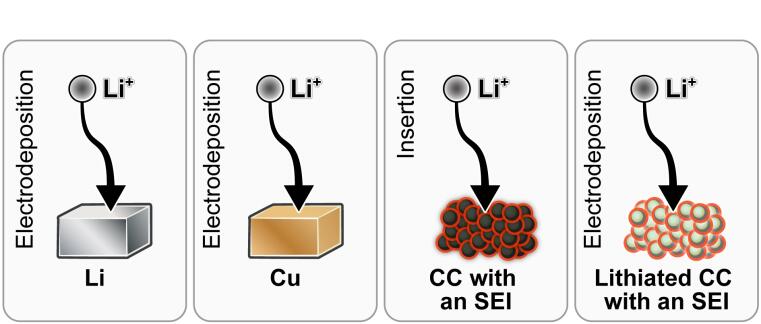Lithium Metal Powder with Carbon Additive Doubles Electrode Capacity of Battery Cells

Lithium metal batteries are a potential key technology for the energy storage systems of the future, because they have the potential to be more powerful, lighter and cheaper than the classic lithium ion battery. Most of the research has focused on lithium metal electrodes made from metal foils. Now, MEET researchers have demonstrated that lithium metal powder (Lip) based composite electrodes made with a conductive carbon additive (Super C65) can provide at least twice the practical electrode capacity of conventional Lip electrodes. In addition, the scientists identified four different types of charge storage mechanisms in these composite electrodes, providing important fundamentals for further development of this battery type.
Conductive Carbon Additive in Lip-based Electrodes Shows Several Effects
Due to its high energy density lithium metal is a promising anode material. Application of the lithium powder-based anodes instead of the lithium foil-based anodes allows a precise control over the amount of lithium in a battery cell. However, the low practical electrode capacity of conventional lithium powder-based electrodes is a challenge. In their study, researchers led by MEET scientist Aleksei Kolesnikov examined the role of the conductive carbon additive in the lithium powder-based electrodes and demonstrated several effects:
- an improved electronic contact between the lithium powder particles and the copper current collector due to a high electronic conductivity of carbon;
- enhanced solid electrolyte interphase formation on the conductive carbon surface and corrosion of the lithium powder particles;
- reversible lithium ion insertion into conductive carbon and
- lithium electrodeposition on the conductive carbon.

Aleksei Kolesnikov explains: “The results indicate that under the same material loading, the composite Lip-based electrodes can provide at least twice the practical electrode capacity of conventional Lip electrodes and with lower overpotentials. Full cells assembled with a Lithium-Nickel-Cobalt-Mangan (NMC) 622 cathode and a composite Lip-based electrode are cycled at least for 100 cycles and show improved cycling performance compared to the full cells assembled with conventional Lip electrodes.”
Application of the lithium powder is not limited to batteries, Kolesnikov classifies the research results. It could also be used as a recyclable energy carrier in metal-air burner or in devices for controlled thermo nuclear fusion.
Full Publication in Energy Technology
Detailed results of the study were published as an open access article in the journal “Energy Technology”. Authors are MEET researchers Aleksei Kolesnikov, Tristan Wulfers, Martin Kolek, Dr Peter Bieker, Dr Marian Cristian Stan and Prof. Martin Winter, Helmholtz Institute Münster of Forschungszentrum Jülich and MEET Battery Research Center at the University of Münster.

